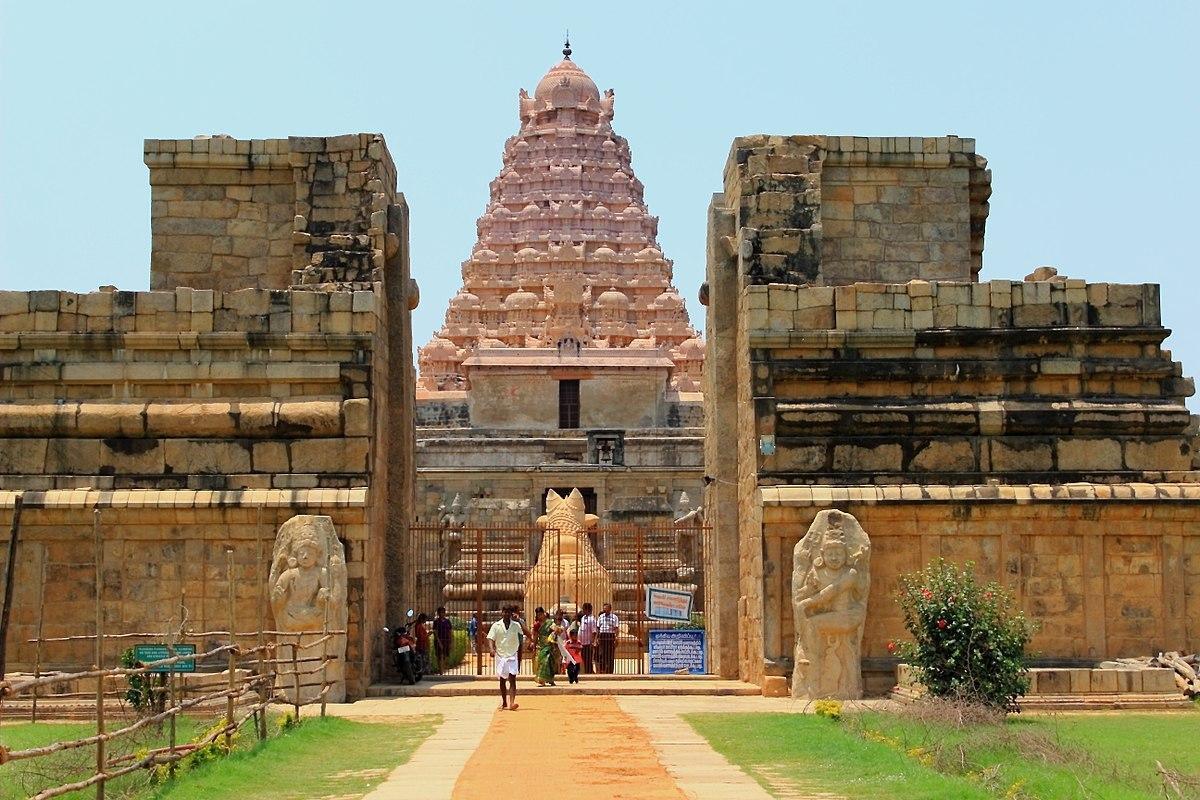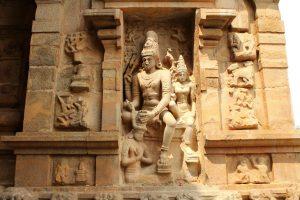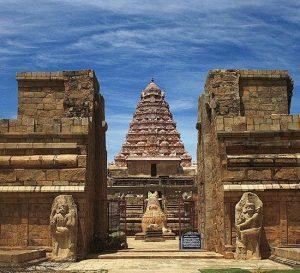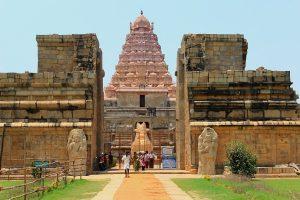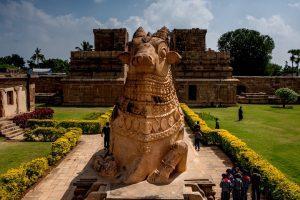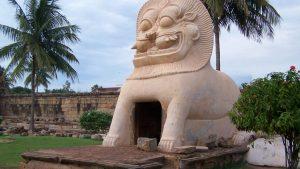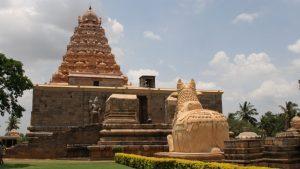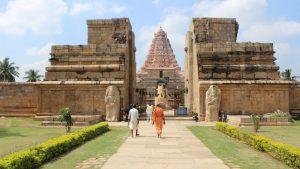Gangaikonda Cholapuram, Ariyalur, Tamil Nadu
| Date built: | – |
|---|---|
| Deity: | – |
| Architectural style: | – |
| Major festivals | Maha Sivaratri |
| Locale: | – |
| District:: | Ariyalur |
| Address: | – |
| Phone | – |
Gangaikonda Cholapuram is a town located in Ariyalur, Tamil Nadu, India. It became the capital of the Chola dynasty in c. 1025 during the reign of Rajendra Chola I, and served as the Chola capital for around 250 years.
The town is about 70 kilometres (43 mi) northeast of Thanjavur city. As of 2014, the ancient city exists as a heritage town in the Ariyalur district of Tamil Nadu, India. The great temple of Brihadeeswarar Temple at this place is next only to the Brihadisvara temple at Thanjavur in its monumental nature and surpasses it in sculptural quality.
Architecture
Ariyalur is best known for the Gangaikondacholisvarar temple in Gangaikondacholapuram, the biggest temple constructed during the reign of Rajendra–I in Ariyalur region. Following the conquest of the Gangetic plains in A.D. 1023 Rajendra–I built a great city called Gangaikondacholapauram and a Siva temple Gangaikondacholisvarar and a lake Chola Gangam in commemoration of his victory. The place, the temple and the lake (Chola Gangam) are the living embodiments of the heroism of the Tamils who unfurled the Chola‘s Tiger flag on the banks of the River Ganges. He also shifted his capital from Thanjavur to this newly built town. From his period to the end of the Chola family rule in A.D.1279 this city was the capital for the Chola Empire for a period of 256 years. The gigantic stone temple which he built in this place is rich repository of beautiful sculptures of middle Chola period. This city is celebrated in the literature of Muvar ula of Ottakuttar and Kalingattuparani of Jayankondar.
Rajendra’s Gangetic expedition was over by his 11th regal year (A.D.1023). The earliest reference which mentions the city of Gangaikondacholapuram is a record of A. D. 1027 of him. Hence it is evident that the city was built in memory of his great victory between A.D. 1023 and 1027. The recently discovered Esalam Copper plates of A.D. 1036 of Rajendra–I give concrete evidence that he built the Gangaikondacholisvarar temple. Another record of A.D. 1068 of Virarajendra in Gangaikondacholapuram which is the earliest record in the temple mentions about the grant of villages to the Gangaikondacholisvarar temple by Rajendra-I in his 24th year (A.D. 1036). These evidences indicate that the siva temple was built between A.D. 1023 and 1036 although the earliest extant record in this big temple belongs to A. D. 1068 of Virarajendra.
This temple is a living history of the Cholas in stone from the period of Rajendra-I and a beautiful gallery of Chola art and architecture. Many sculptures brought from Andhra, Karnataka and Bengal as war trophies are also preserved in the temple and in the nearby villages. Chandesura Anugraha Murthy and Sarasvathy are the most beautiful sculptures of the temple.
At present it is under the control of ASI and the HR&CE and recently the UNESCO declared the temple as one of the world heritage monument.
Legend / Local stories
The city was founded by Rajendra Chola I to commemorate his victory over the Pala Dynasty. The name means The town of the chola who took over Ganga (water from Ganga) or who defeated (the kings near) Ganga. It is now a small village, its past eminence only remembered by the existence of the great Lord Maha Shiva Temple. The Chola empire included the whole of southern India to the river Thungabadhra in the north. For administrative and strategic purposes they built another capital and named it Gangaikondacholapuram.
The city seems to have had two fortifications, one inner and the other outer. The outer was probably wider. The remains of the outer fortification can be seen as a mound running all around the palace.
Excavations suggest that the outer fortification was built of burnt bricks, was about six to eight feet wide. It consisted of two walls, the intervening space (the core) being filled with sand. The bricks are fairly large in size and are made of well-burnt clay.
The surviving temple in Gangaikonda Cholapuram was completed in 1035 AD.[4] Rajendra emulated the temple built by his father after his victory in a campaign across India that Chola era texts state covered Karnataka, Andhra Pradesh, Odisha, and Bengal. After his victory, he demanded that the defeated kingdoms send pots of Ganges River water and pour it into the well of this temple.[2]
Rajendra I, states the Tamil tradition, thereafter assumed the name of Gangaikonda Cholan, meaning the one who conquered the Ganges. He established Gangaikonda Cholapuram as his capital from the medieval Chola capital of Thanjavur, which would go on to become the capital for the next 250 years. Rajendra I built the entire capital with several temples using plans and infrastructure recommended in Tamil Vastu and Agama sastra texts. These included a Dharma Sasta, Vishnu and other temples. However, all of these were destroyed in late 13th and 14th centuries except the Brihadishvara temple. The other Chola landmarks are evidenced by soil covered mounds and excavated broken pillar stumps and brick walls found over an area of several kilometers from the surviving temple.
The reasons for the city’s destruction are unclear. According to Vansanthi, the Pandyas who defeated the Cholas during the later part of 13th century “may have raged the city to ground” to avenge their previous defeats.However, it is unclear why other temples were destroued and this temple was spared, as well as why there are around 20 inscriptions from later Cholas, Pandyas and Vijayanagar Empire indicting various gifts and grants to this temple.An alternate theory links the destruction to the raids and wars, particularly with the invasion of the capital city and the territories that were earlier a part by the Chola Empire along with Madurai by the armies of Delhi Sultanate led by the Muslim commander Malik Kafur in 1311, followed by Khusrau Khan in 1314 and Muhammad bin Tughlaq in 1327. The period that followed saw wars between the Hindu kings and the Muslim Sultans who seceded the Delhi Sultanate and carved out new polity such as the nearby Madurai Sultanate (1335–1378).The Vijayanagara Empire defeated the Madurai Sultanate in 1378 and this temple along with other Chola era temples thereafter came under Hindu kings again who repaired and restored many of them.
Photo Gallery
How to Reach:
Contact Details
Official Address

